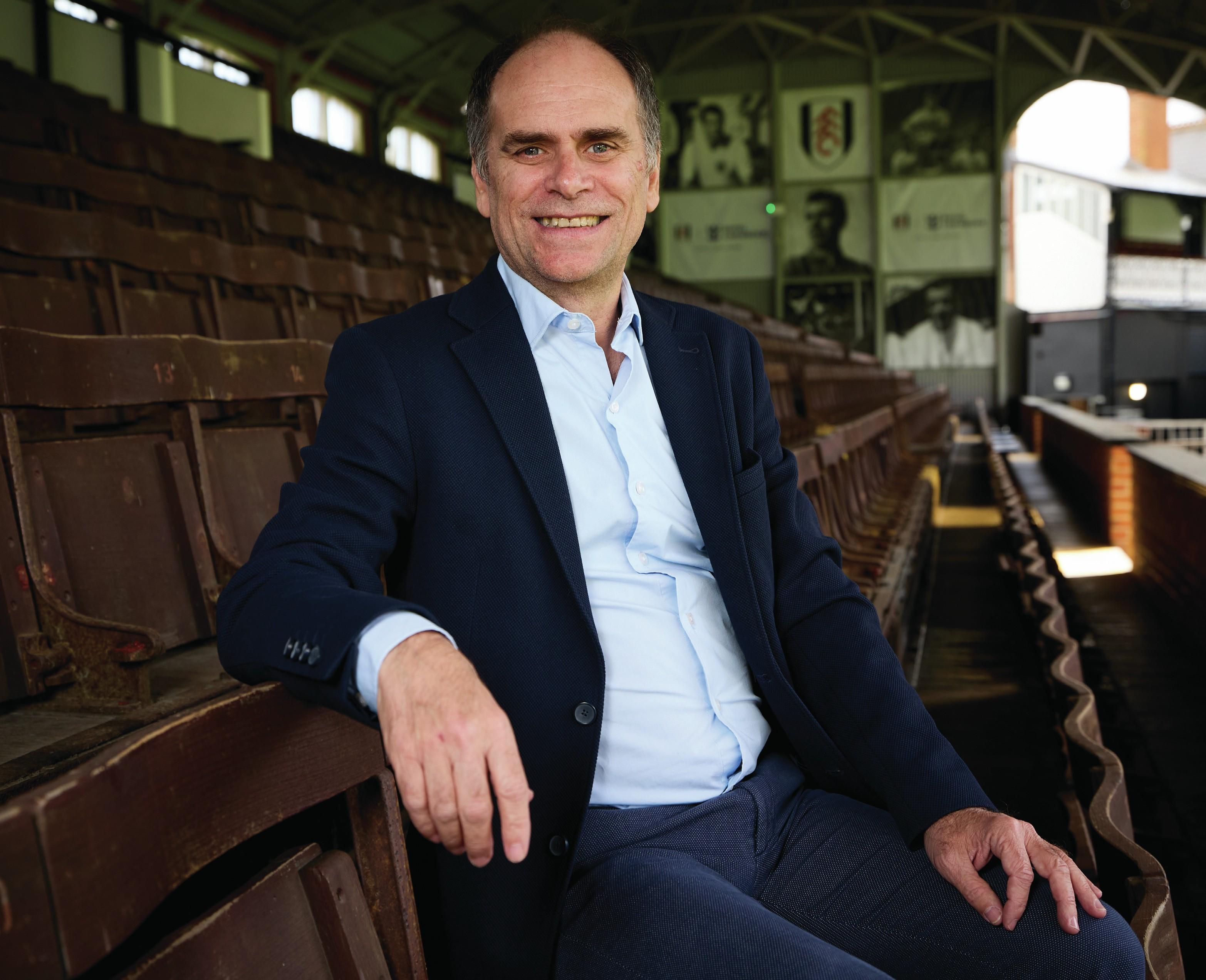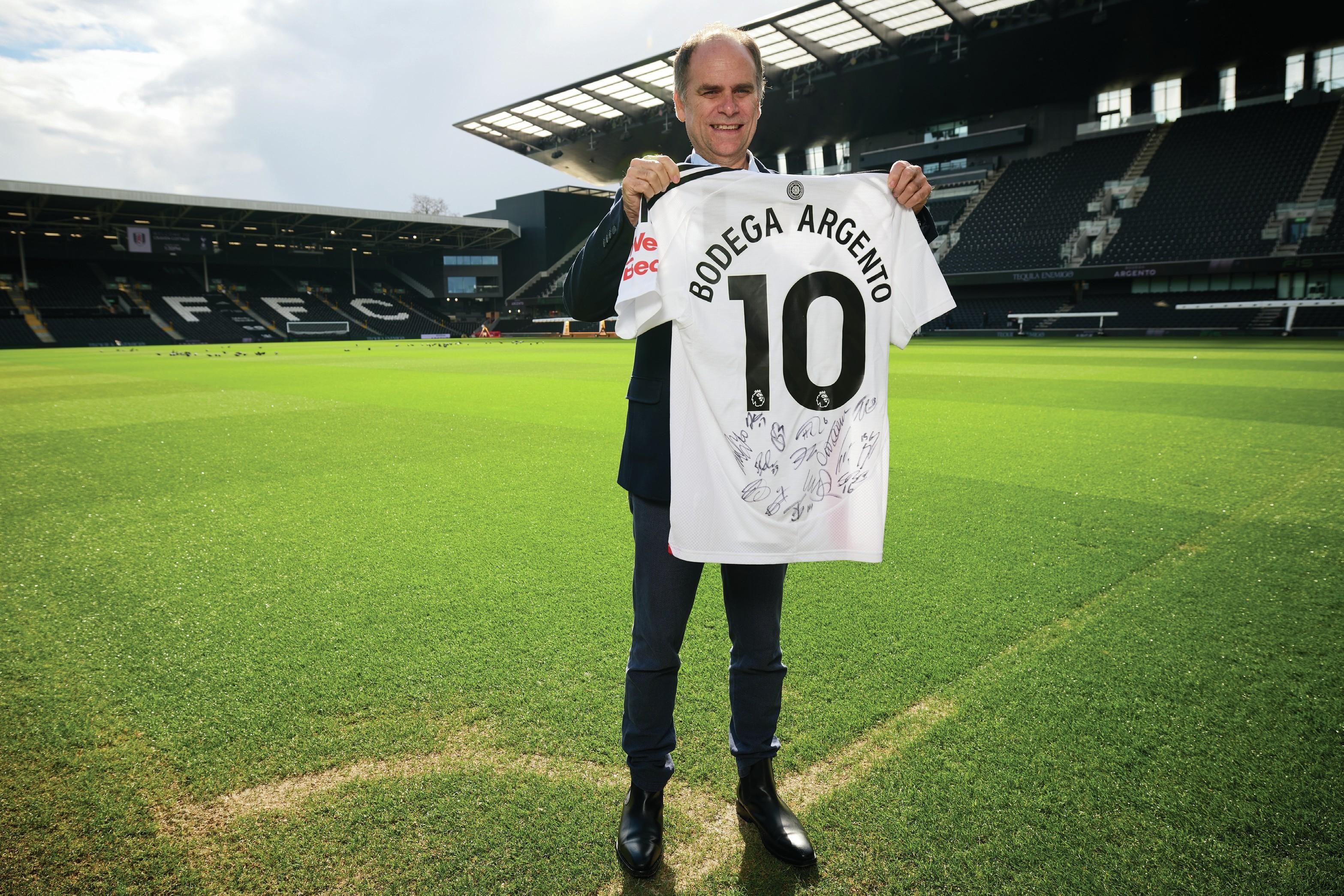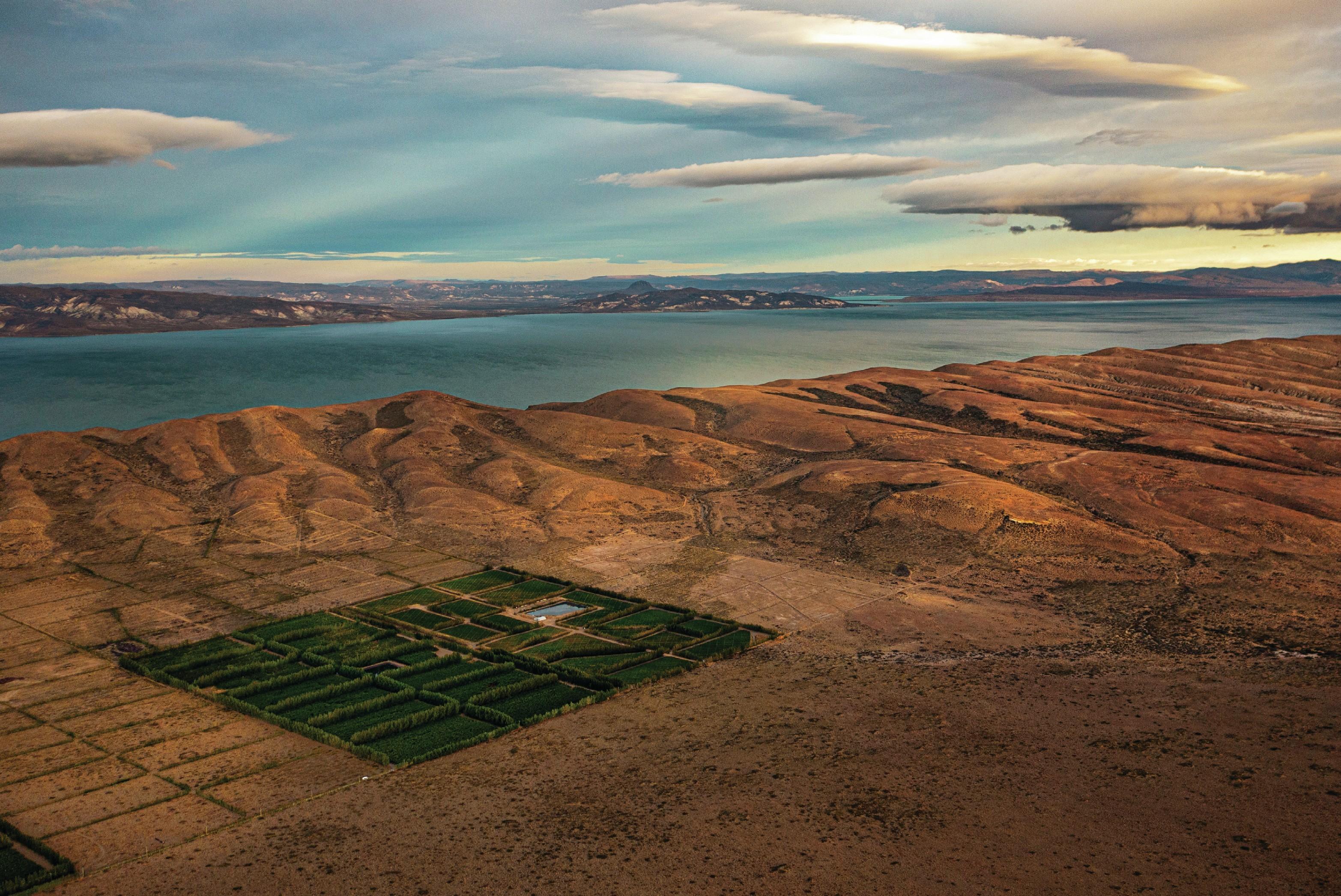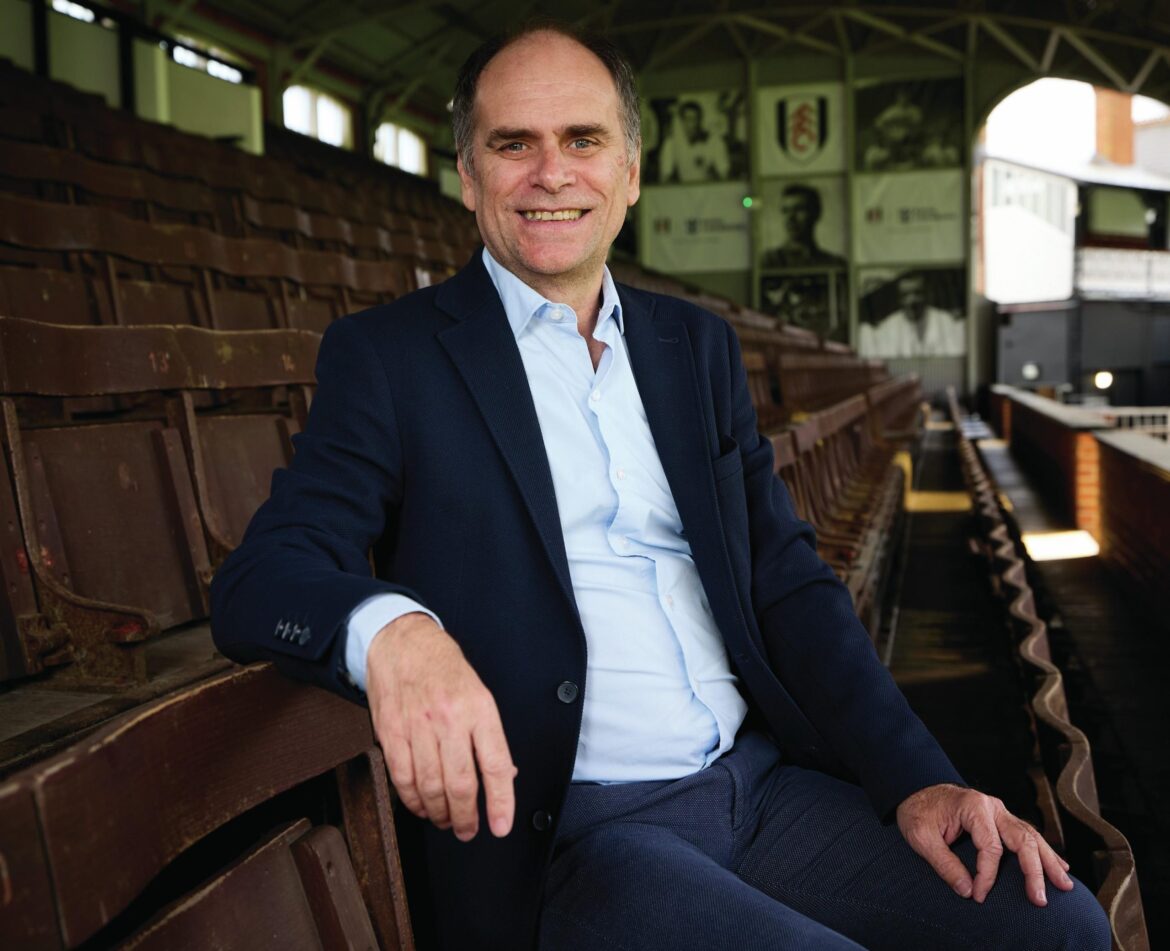Rafael Calderón, managing director of Grupo Avinea, tells Sarah Neish about Argentina’s latest Geographical Indication – and why President Trump’s tariffs provide “a window of opportunity” for Argentine producers.

LIKE RUSSIAN dolls, the more figurines you prise open within Argentina’s Grupo Avinea, the more you uncover. At the heart of this painted nest of ladies are four core wine brands – Bodegas Argento, Bodegas Otronia,Viña Artesano and Pacheco Pereda.
However, Grupo Avinea is just one part of a much larger, privately-owned wine operation amassed by Argentine billionaire Alejandro Bulgheroni, which includes wineries strewn across Napa Valley, Tuscany, Uruguay and more. Spread as they are around the globe, how much dialogue is there between the various players within the Alejandro Bulgheroni Family Vineyards portfolio?
“Each operation is independent, but I have a relationship with the MD of each winery,” explains Rafael Calderón, managing director of Grupo Avinea.
“They are all at different stages in the development of their brand and have expertise in different markets. Argento is doing very well for Grupo Avinea in the UK and we have a lot of knowledge in that market. Bodega Garzón in Uruguay, on the other hand, knows more about the US and the different price points and positioning there.”
Karmic reshuffle
In a kind of karmic reshuffle, Bulgheroni (estimated net worth US$4.6 billion), has refocused his attention away from the oil and gas that made his fortune to greener, renewable fuels. As such, all his wineries either currently use or are bringing in wind and solar energy to power their operations, as well as actioning other sustainable initiatives. Grupo Avinea, with its laser focus on organics, is no exception. The group is the largest organic producer in Argentina and, according to its sustainability director Andrés Valero, has an ambitious target to reach 600 organic hectares by 2028.
“There is a lot of wine in the market and we are trying to establish a point of difference. Organic is the only category that is growing,” Calderón says frankly. “Otronio is all organic, Argento is about 90% organic. Where we are non-organic it is a tactical decision, made for the less premium brands in our group. Ultimately, we want to produce wines with identity and a sense of place and, in Argentina, being so close to the Andes, there are very good conditions for organic viticulture. In Patagonia, for example, there is not a lot of rain and the area has strong winds of up to 100km, which is great for avoiding disease.”
The country’s “fantastic natural resources” mean its wine producers can “do organic in a very easy way”. Despite the temptation to expand its hectarage rapidly, Calderón cautions that Grupo Avinea wants to grow its organic offer according to demand. “We have room for growth, but we are monitoring the economic situation closely,” he says diplomatically.
Chainsaw politics
That economic backdrop has been changing on an almost hourly basis since Javier Milei was sworn in as Argentina’s President in December 2023, with the new head of government brandishing a chainsaw at his inauguration to symbolise his determination to significantly cut public spending.
“The main issue in the past was the instability in Argentina,” says Calderón. “For long-term planning, any business needs stability and, in the wine trade, especially in the premium sector where the product has a longer life cycle, planning is essential. You need to understand long-term demand, and to have at least some ideas for future growth. Otherwise you will end up with shortfalls.”
The nation’s new economic policy is “helping to establish that stability”, says Calderón carefully. “Things are changing quickly, but it takes time. Argentina is not an easy country.”
The last few years have seen many Argentine businesses abandon the native peso due to the devaluation of the currency. According to Calderón, Grupo Avinea currently trades in US dollars, Canadian dollars or euros, depending on the market and, he stresses: “It will stay like this for the foreseeable future.”
One way to bolster the global standing of Argentine wine would be greater investment in the roads and ports surrounding Mendoza. Calderón explains that, like many companies, Grupo Avinea tends to use Chilean ports rather than Argentine ports, because “they are cheaper, easier and closer. You need to cross the mountains to reach the main Argentine ports, and our closest is 1,000km from Mendoza,” he says. “So there is still work to be done.”

Big match: Argento is an Official Partner of English Premier League club Fulham FC
GI Status
While overhauling the country’s logistical framework falls outside Grupo Avinea’s remit, Calderón has been hard at work in areas in which he is able to exert more control. In May 2025, following years of campaigning, Grupo Avinea saw Alto Agrelo, where its flagship wine estate is based, become Argentina’s latest Geographical Indication (GI).
The designation followed a multi-year process of “trying to demonstrate that Alto Agrelo has something different and specific to offer”, says Calderón, with one of the region’s unique selling points being “the 500m difference between the highest and lowest altitudes”. Detailed research into the soil was carried out “to understand the different layers”, and Grupo Avinea took time to meticulously compare its wines with those from other producers in the region to understand the typicity of the terroir. “We sent all the technical studies off at the start of the year,” he says.
Just months later, the region was granted GI status within Mendoza’s Luján de Cuyo. Since that point, Calderón says, “we have been creating a joint organisation between all the producers in the region, including meeting recently to establish some common objectives and a shared vision for how to promote Alto Agrelo to consumers”.
Grupo Avinea owns 232ha of certified organic vineyards in the new GI, and winemaking takes place there for flagship expressions including Argento Estate Bottled Organic Malbec and Artesano de Argento Organic Malbec.
Digital challenge
Calderón himself is no stranger to advocating for progress in the wine trade, having been director of trade association Wines of Argentina (WoA) from 2018 to 2022. Does he think he had a tougher or easier job during his tenure than current WoA head Alejandro Vigil?
“My time with WoA was during the Covid pandemic, so it was an interesting challenge,” he says. “I had to change the culture of the team to think in a more digital way and to gain more awareness and ability in the digital field; to get our wines on important e-commerce sites like wine.com in the US, for instance. Consumption grew a lot back then. Today, WoA is dealing with the opposite and more difficult challenge, in that wine consumption is in decline.”

Green oasis: Bodega Otronia is based in the extreme location of Patagonia
One market Calderón has identified as having great potential in this new reality is the US, with President Trump’s import tariffs carving out new possibilities for Argentina. He says: “Every winery wants to be there and at Grupo Avinea we are trying to get more distribution in the US. It’s a tough time because importers are affected there. But the tariff situation is much harder for Europe than it is for us, so we are trying to take advantage of that. It is a window of opportunity for Argentine producers.”
In order to leap through this window, “we need to better understand the impact that the tariffs are having on European producers. Will they start selling more of their wines to other markets instead of to the US?”
Meanwhile, Grupo Avinea’s forward march shows no signs of slowing. October sees the launch of a new wine range under the Viña Artesano label, based on the flora and fauna in different vineyards. “We have a lot of research on the biodiversity, the insects and organisms in the soil. Each site has specific flowers growing as cover crops, and we have named the wines in the new range after these different flowers,” says Calderón.
The collection will be rolled out in the UK first, with the wines showcased at a masterclass in partnership with db on 14 October at 67 Pall Mall. The range will then launch in Brazil “and hopefully the US”, with Argentina to follow. While much has been made of Argentina’s younger generation switching its alliance from wine to beer, Calderón insists it’s far from game over. “It might be small growth, but it’s still growth,” he says of the incremental climb in domestic sales.
Giving back
Part of ensuring the positive opinion of Gen Z towards the wine trade is Grupo Avinea’s commitment to giving back to communities through initiatives such as Fairtrade. Calderón and his team are also due to hold a roundtable discussion at the Argentine Embassy in London during October to explore the importance of the Fairtrade movement for UK consumers.
“We believe Fairtrade is still a relevant brand name and concept, especially for European countries, with our consumer research showing that the UK is the number one market interested in Fairtrade products,” says Calderón. “We currently have about 25 different projects going simultaneously with Fairtrade.”
Ultimately, what goes into one’s glass, as with most things in Argentina, is a delicate dance between the ‘haves’ and the ‘have nots’. According to Forbes, the membership fee for Alejandro Bulgheroni’s private wine club, The Garzón Club, will set you back an initial US$200,000 plus an additional US$10,000 in annual fees. But you can’t put a price on consumer trust, and that’s exactly what Calderón and his organic Grupo Avinea are pouring into.
Related news
The Big Interview: Sebastián Labbé
The Big Interview: Nicolas Joly
The Big Interview: Adrian Bridge


Dining and Cooking